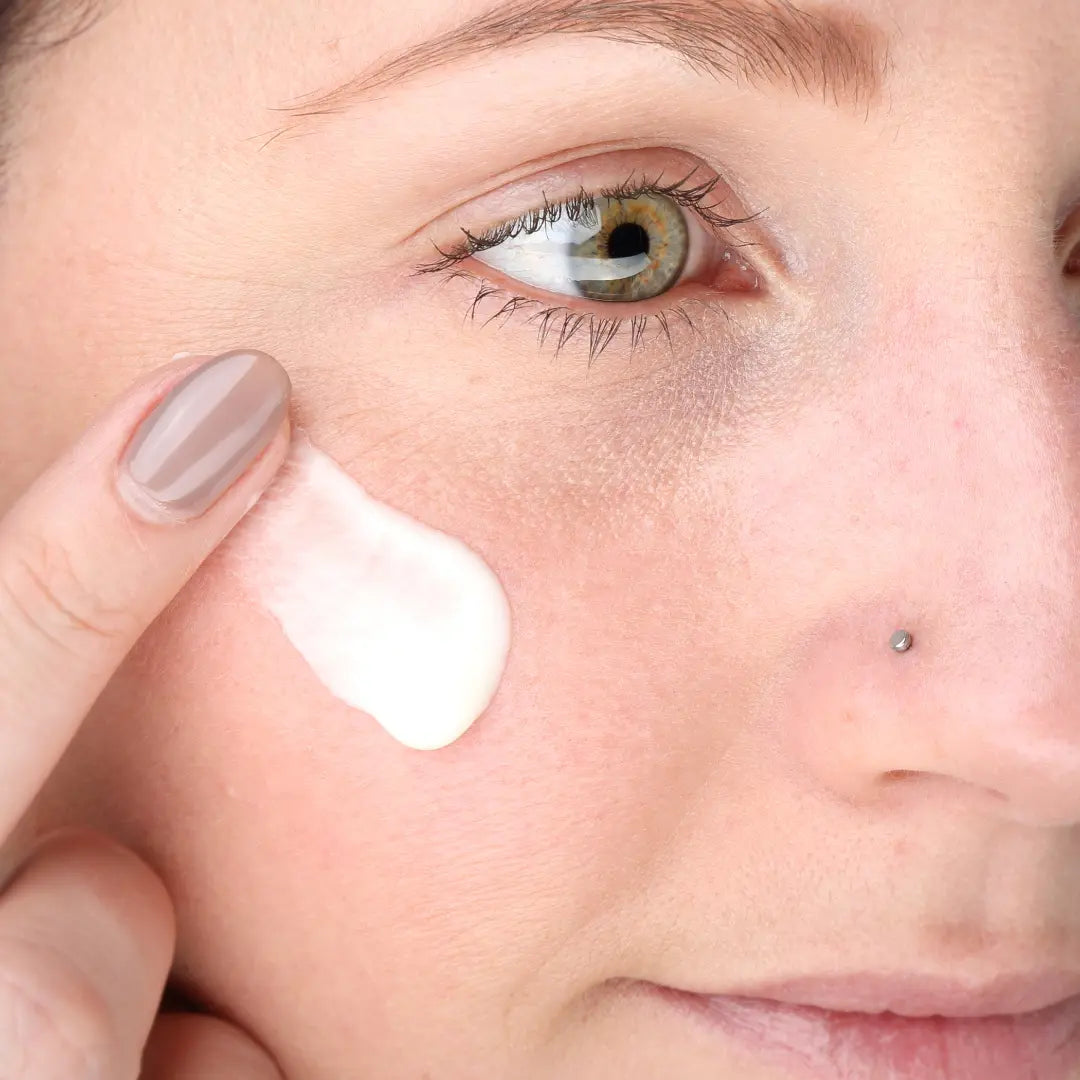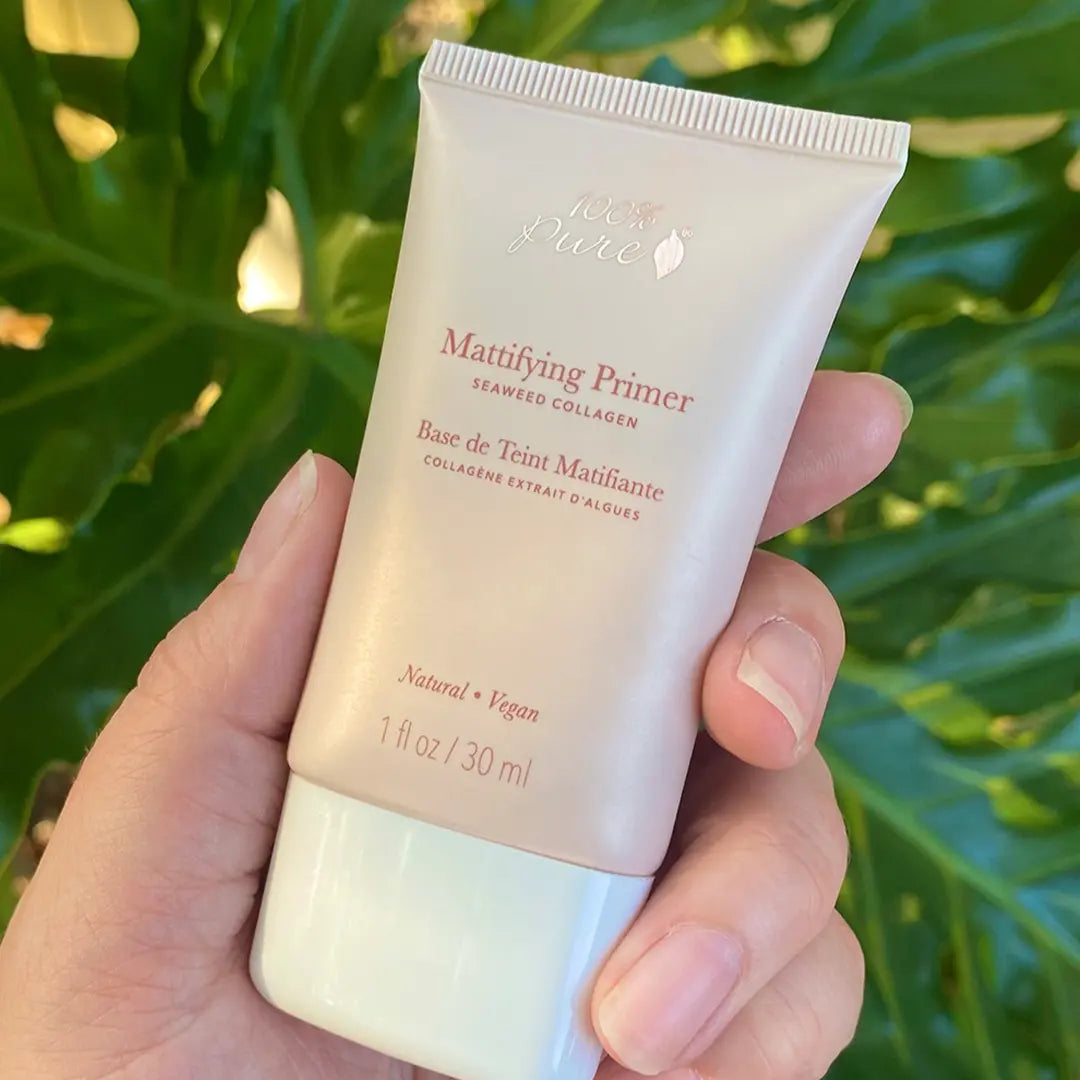Face primers have become a staple in modern beauty routines. Touted as the secret to flawless, airbrushed skin, they’re often the first step before foundation—and the first product recommended when your makeup won’t stay put.
Promoted as miracle workers for smoothing texture, blurring fine lines, and boosting longevity, primers sound almost too good to be true. So what’s fact—and what’s just clever marketing?
In this blog, we’ll separate science from hype to uncover what primer really does, when it helps, and why you might not need one at all—especially if your skincare is doing the heavy lifting.
The Evolution of Primers: From Backstage to Bathroom Shelf
Then vs. Now
Primers weren’t always part of the average makeup drawer. Originally, they lived behind the scenes—used by professional makeup artists in film, photography, and fashion to prep the skin for long shooting days and harsh lighting. Their main job? Create a smooth, even surface so makeup would apply more seamlessly and last longer.
Fast-forward to today, and primer makeup has moved from the studio to the everyday. Once niche, primers are now one of the top-selling categories in consumer beauty. From pore-blurring to glow-enhancing, there’s a primer for nearly every skin concern—and they’re especially popular among those seeking smoother texture or longer wear time.
A major catalyst for this rise? The advent of HD photography, Instagram filters, and selfies. With ultra-detailed images and social sharing, consumers began chasing that flawless, airbrushed finish once reserved for editorial spreads.
Industry insight: Primer sales made up less than 1% of the makeup market in 2000—but by 2018, they’d skyrocketed to over 10%. It’s clear that primers didn’t just catch on—they transformed the way we prep our skin.
What Primers Actually Do: Science Over Marketing
Surface Smoothing + Texture Blurring
Most primers contain silicone-based ingredients or plant-derived film formers that fill in fine lines, pores, and uneven skin texture. This creates a more uniform surface, helping foundation “sit” more evenly rather than settling into creases.
Think of it like spackling a wall before you paint: the smoother the surface, the better the final finish.
Optical Illusion at Work
Primers don’t erase imperfections—they blur them. Many formulas contain light-scattering particles (like mica or silica) that reflect light in different directions, minimizing the appearance of fine lines and discoloration. The result? Softer, more diffused skin—on camera and in real life.
Color-correcting primers use tinted pigments to neutralize undertones. For example, green pigments cancel redness, peach brightens dark circles, and lavender counteracts sallowness. While these correct visual tone, they don’t address the underlying skin condition.
Product Examples
- Mattifying Primer: Controls shine with oil-absorbing ingredients like silica or bamboo extract—great for oily T-zones.
- Luminous Primer: Uses light-reflecting botanicals (like fruit pigments or mica) to impart a dewy glow, ideal for dry or dull skin.
Primers, in essence, are short-term problem-solvers. For long-term skin improvement, the real work starts with skincare.

Truth #1: Primers Don’t Change Your Skin—They Mask It
Primers are often praised for making skin look “poreless” and “flawless”—but that effect is largely smoke and mirrors.
Here’s the truth: most primers work by creating a silicone-based layer that fills in fine lines and scatters light. This gives the illusion of smoother skin, but the underlying texture—pores, wrinkles, dryness—is still there.
Backed by Science: Imaging studies confirm that the effects of primer are visual, not corrective. They don’t change skin structure—they simply blur it.
Think of it like a Snapchat filter for your face: it looks great in the mirror, but it’s temporary. And depending on your skin type, it may even emphasize texture over time.
If you’re looking for lasting results, skincare—not just primer—has to be the foundation.
Truth #2: They Don’t Always Extend Makeup Wear as Much as Claimed
We’ve all seen the claims—“24-hour wear,” “all-day hold,” “won’t budge.” But here’s what most beauty ads don’t say: primers alone rarely deliver marathon results.
Studies and real-world testing show that most primers add about 2 to 4 extra hours of makeup longevity—not the 12+ hours often advertised.
What Really Makes Makeup Last? Those long-wear results typically depend on a combo of factors:
- Long-wearing foundation
- Setting powders
- Setting sprays
- Your skin type and environment (think heat, humidity, oil production)
In short: primers can help—but they’re not miracle glue. If staying power is your goal, your whole routine needs to be working together—not just your primer.
Truth #3: The Wrong Primer Can Make Your Makeup Worse
Primers are supposed to be the smooth canvas beneath your masterpiece—but the wrong one? It can ruin the whole painting.
What goes wrong?
Pairing mismatched formulas—like a silicone-based primer under a water-based foundation—can cause pilling, patchiness, or that dreaded sliding effect by midday.
And if you’ve got dry or textured skin, beware of mattifying primers:
- They often cling to dry patches
- They can exaggerate fine lines
- They may leave your skin looking dull, not flawless
Primer Tip: Always match base formulas (water with water, silicone with silicone), and choose a texture that complements your skin—not fights it.
Truth #4: Not Every Skin Type Needs Primer
Dry or sensitive skin often benefits more from a great moisturizer than a primer. Instead of layering on products, fewer steps can mean less irritation—especially for mature or reactive skin.
Alternative Solution: Swap your primer for a hydrating cream like Hydra Drench Cream to smooth and prep your skin with nourishing moisture instead of silicones. This helps create a natural, healthy base that supports makeup wear without clogging pores.
Truth #5: Many Primers Contain Ingredients That Trigger Sensitivity or Breakouts
While primers aim to create a flawless canvas, many contain ingredients that can actually irritate the skin or cause breakouts—especially for those with sensitive or acne-prone skin.
Silicones, such as dimethicone, are popular in primers because they create a smooth, velvety texture and help makeup glide on easily. However, these silicones can form a barrier on the skin that traps oil, sweat, and bacteria, potentially clogging pores and leading to breakouts in acne-prone skin.
Additionally, many primers include preservatives (like parabens or formaldehyde releasers) and fragrances that can provoke allergic reactions, redness, or irritation. These ingredients can disrupt the skin’s natural barrier, increasing sensitivity and inflammation over time.
Some primers also use synthetic film-formers to ensure long-lasting makeup adherence. While effective at creating a durable finish, these ingredients can be occlusive, sealing in impurities and preventing the skin from breathing properly, which can aggravate conditions like eczema or rosacea.
For those with reactive or sensitive skin, it’s crucial to choose primers formulated with non-comedogenic, fragrance-free, and gentle ingredients. Alternatively, swapping primers for hydrating creams or serums that improve skin texture without heavy occlusion can be a healthier option for maintaining clear, comfortable skin.

What Primers Do Well (When Used Strategically)
While primers aren’t miracle workers, they do have specific strengths when used thoughtfully. Understanding where and how primers truly shine can help you get the most out of them—and avoid overusing products that might not benefit your skin type or routine.
Pore Minimization (Temporarily)
Primers can temporarily fill in enlarged pores and fine lines, creating a smoother surface that reflects light more evenly. This optical effect softens the appearance of texture and imperfections—especially in areas like the T-zone, where pores tend to be more visible.
Oil Control
Silica-based primers are effective at absorbing excess oil and reducing shine throughout the day. When applied sparingly, they help keep high-sebum zones matte without over-drying the skin. However, overuse can lead to dryness or flakiness, so moderation is key.
Color Correction
Primers with subtle tinting can neutralize discoloration before foundation application. Green primers counteract redness, peach or apricot tones brighten dark circles, and lavender shades combat dull, sallow complexions. These work best when layered under minimal makeup to maintain a natural, even skin tone.
Skincare: The Real MVP for Flawless-Looking Skin
Achieving a flawless makeup finish starts long before primer or foundation—your skincare routine is the real game-changer. A smooth, radiant canvas begins with clean, hydrated, and well-exfoliated skin.
Prep with Exfoliation + Hydration
Gently polishing away dead skin cells using tools like our Acai Pulp Facial Scrub or a Konjac Sponge infused with charcoal creates a refined surface that makeup can adhere to more evenly. Follow up by deeply hydrating your skin with a nourishing product like Hydra Drench Cream. Well-moisturized skin helps makeup glide on smoothly and prevents patchiness or dryness throughout the day.
The Case for Skincare-First
Scientific studies consistently show that maintaining a consistent skincare routine improves makeup longevity far more effectively than relying on primer alone. When your skin is truly treated and cared for—rather than simply masked—makeup looks better and your skin’s health benefits in the long run. Prioritizing skincare ensures your complexion stays radiant, resilient, and ready for any look.
The Hybrid Revolution: Primers That Act Like Skincare
The beauty industry is evolving, blending makeup with skincare to create hybrid primers that do more than just mask imperfections. These formulas often deliver hydration, antioxidants, or soothing ingredients alongside their traditional smoothing effects.
Choosing primers that double as lightweight treatments can enhance your skin’s health while prepping for makeup, offering a smarter, more holistic approach. However, it’s still best to use these products sparingly and tailor them to your unique skin needs, ensuring you get the perfect balance of care and coverage.
When to Use—and Skip—Primer
Knowing when to reach for a primer—and when to skip it—can make all the difference in your makeup’s look and feel. Primers aren’t a one-size-fits-all solution; their benefits depend on your skin’s condition, the type of makeup you use, and your desired finish. Use this guide to decide when primer is worth the extra step and when it’s better to go without.
Use Primer If:
- You’re attending an event with flash photography and want flawless photos
- You need your makeup to last all day or night without fading
- You have visible texture or oiliness in specific areas like the T-zone
- You’re using a silicone-based foundation that pairs well with a silicone primer
Skip Primer If:
- You’ve already hydrated and exfoliated well, creating a smooth base
- Your foundation glides on smoothly without extra help
- You prefer a natural, skin-like, dewy finish over a matte look
- Your skin is sensitive or prone to breakouts and may react to primer ingredients
Application Tips That Make or Break Your Primer
Applying primer might seem straightforward, but the technique can dramatically affect your makeup’s finish and longevity. Here’s how to get it right:
- Use just a pea-sized amount: It’s tempting to apply a generous layer, but too much primer can cause your foundation to pill, flake, or slide off. A small amount is enough to smooth your skin without interfering with makeup adhesion.
- Let it set for 30 to 60 seconds: After applying primer, give it time to fully absorb and form a smooth base. Rushing to foundation too soon can disrupt the primer’s effect and create uneven texture.
- Pat, don’t rub: Instead of rubbing primer into your skin, gently pat it. This technique helps the product settle evenly without moving or removing the layers underneath.
- Try zone priming: Not all areas of your face have the same needs. Consider applying different primers to different zones — mattifying formulas on your oily T-zone, hydrating primers on dry cheeks, and smoothing primers around textured areas. This targeted approach maximizes benefits and prevents overloading your skin.
- Lock in your look with Bamboo Blur Powder: Finish your makeup routine with a light dusting of our Bamboo Blur Powder. This finishing powder offers a soft-focus effect that subtly blurs imperfections and sets your makeup without heaviness.
- Know the difference: setting powder vs. finishing powder: Setting powders primarily lock your makeup in place to reduce shine and prevent fading, while finishing powders provide a final touch of blur and softness for a polished look. Choose the right one depending on your desired finish.
Conclusion
Primers can be a game-changer—but only when used correctly and thoughtfully. They’re not a magic wand that transforms your skin, but rather a strategic tool that enhances your makeup routine when applied with care. Understanding what primers truly do (and don’t do) empowers you to make smarter choices tailored to your skin type, makeup goals, and daily lifestyle. For many, the real secret to flawless-looking skin isn’t just primer—it’s consistent, targeted skincare paired with intentional product use. Prioritize skin health first, and let primers play their supportive role to elevate your natural beauty.
FAQ Section
Q1: What does primer do under makeup?
Primer creates a smooth base by filling in fine lines and pores, helping makeup apply more evenly and last longer.
Q2: Can primer make pores look smaller?
Yes, primers can temporarily minimize the appearance of enlarged pores by filling them in and improving light reflection.
Q3: What’s the difference between primer and moisturizer?
Moisturizers hydrate and nourish your skin, while primers create a surface for makeup to adhere to and improve its finish.
Q4: Do I need both a primer and a setting powder?
Not always. Primer helps with texture and longevity before foundation, while setting powder locks your makeup in place and controls shine.
Q5: What’s the best primer for older or mature skin types?
Look for hydrating, lightweight primers with skin-friendly ingredients like antioxidants and minimal silicones to avoid dryness or irritation.
https://www.100percentpure.com/cdn/shop/articles/Thumbnail_100_PURE_What_Does_Primer__Really__Do__The_Shocking_Truth_Behind_Flawless-Looking_Skin_1200x1200.webp?v=1747734211
Source link




